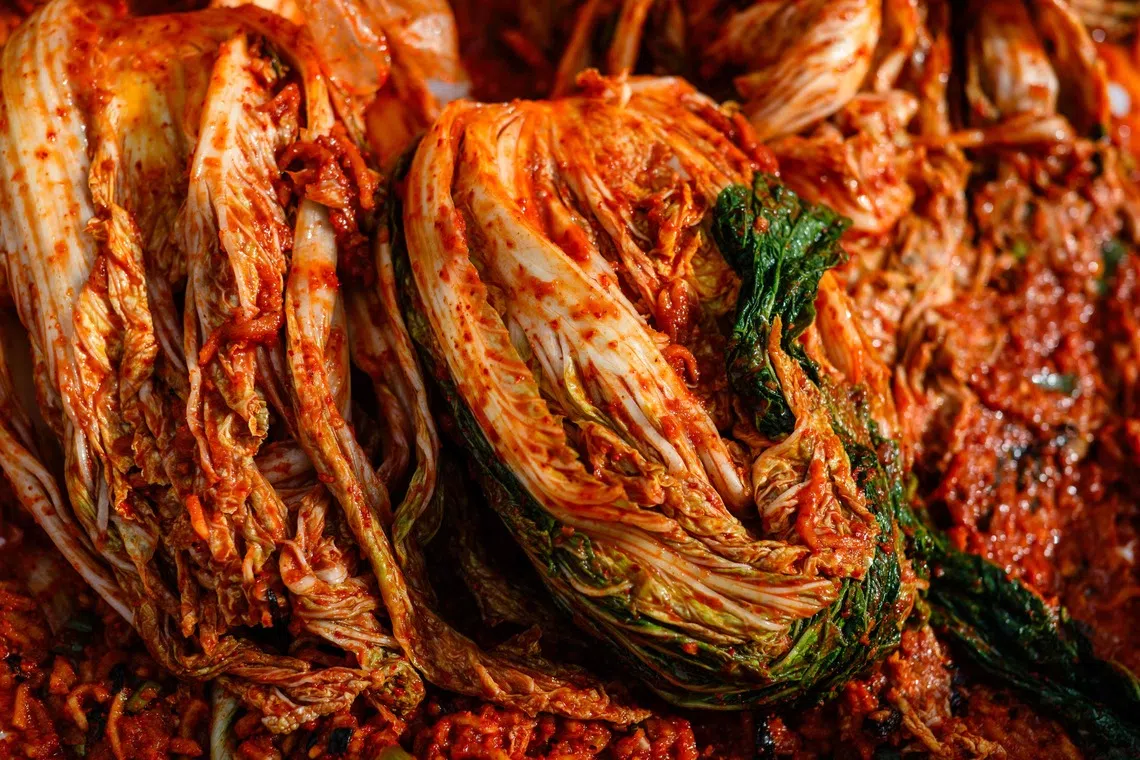The world is eating more kimchi, but South Korea is importing more of it from China
Sign up now: Get insights on Asia's fast-moving developments

Officials say persistent inflation and the 2024 surge in domestic cabbage prices, caused by extreme weather, have continued to push demand for cheaper Chinese-made kimchi.
PHOTO: AFP
Follow topic:
SEOUL - Global demand for Korean kimchi continues to grow, with exports on track to hit an all-time high in 2025.
But at home, more South Koreans are consuming Chinese-made kimchi, making it likely that South Korea will post another kimchi trade deficit.
According to trade data released on Nov 24 by the Korea Customs Service, South Korea’s cumulative kimchi exports in 2025 reached US$137.4 million (S$179.5 million) as at October, up 2 per cent from a year earlier.
During the same 10-month period, imports amounted to US$159.46 million, rising 3.1 per cent and outpacing the 2 per cent growth in exports.
As a result, the kimchi trade balance so far in 2025 remains in the red, with the deficit widening 10.3 per cent from a year ago to US$22.07 million.
Price remains the key driver behind the rise in imports.
Officials say persistent inflation and the 2024 surge in domestic cabbage prices, caused by extreme weather, have continued to push demand for cheaper Chinese-made kimchi. Imports of Chinese kimchi hit a record US$189.86 million in 2024, up 16.1 per cent from 2023.
Meanwhile, shipments of Korean-made kimchi are expected to hit another record in 2025, surpassing 2024’s all-time high.
“We will work to develop the kimchi industry into a future-oriented export sector and help solidify kimchi’s place as a global food brand,” Agriculture Minister Song Mi-ryung said.
Exports totalled US$163.57 million in 2024, double the figure from 2017, and have steadily grown on the back of rising global interest in K-food and heightened health awareness during the pandemic.
They reached US$148.12 million in 2022, US$155.6 million in 2023, and then set a new record in 2024.
Japan remains the largest market for Korean kimchi, importing US$47.55 million worth as at October, a 4.4 per cent increase from a year earlier.
The United States brought in US$36.01 million, a 5.8 per cent decrease, which marks a notable shift for a market that had seen rapid growth since 2019.
In Europe, the Netherlands imported US$7.97 million, a 3.3 per cent decline.
Canada imported US$7.63 million, up 17.6 per cent, while Australia saw a slight increase to US$6.68 million. THE KOREA HERALD/ASIA NEWS NETWORK

